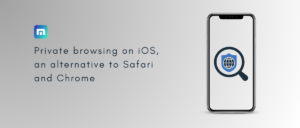In the fast-paced digital world we inhabit, web browsers serve as our gateways to a wealth of information and countless online services. From shopping and banking to social networking, these tools have transformed how we interact with the virtual realm. However, this reliance brings an underlying concern: the growing threat from cybercriminals.
Malware lurks in seemingly harmless downloads, while slick phishing attempts can deceive even the savviest users. Identity theft is just a click away if we’re not vigilant. The good news is that each of us has the power to fortify our defences through careful configuration of browser security settings.

By taking a few moments to enhance our browser’s protection features, we can significantly reduce the risk posed by online threats. Implementing robust privacy controls, enabling pop-up blockers, and adjusting cookie settings are just a few effective measures.
In this blog post, we’ll discuss essential security tips that every internet user should know. Together, we’ll explore actionable steps to create a safer browsing experience that protects sensitive information. Let’s embark on this journey to secure our digital lives!
In the whirlwind of our digital age, web browsers have become the portals through which we access a vast universe of information and myriad online services. Whether we’re indulging in retail therapy, managing our finances, or connecting with friends across social media platforms, these essential tools have revolutionised our engagement with the online world. Yet, as we navigate this expansive landscape, an unsettling reality looms the increasing menace posed by cybercriminals.
Malicious software often hides behind innocuous downloads, and sophisticated phishing schemes can trick even those who consider themselves tech-savvy. The threat of identity theft is ever-present; a single careless click could lead to dire consequences if we let our guard down. Fortunately, there’s a silver lining: we each possess the ability to strengthen our defences by meticulously adjusting our browser’s security settings.

Taking just a few moments to strengthen these protective features can dramatically diminish the risks associated with online threats. Simple yet effective actions—such as implementing stringent privacy controls, activating pop-up blockers, and fine-tuning cookie preferences—can go a long way in safeguarding our personal data.
In this narrative journey through cyberspace security, we’ll uncover vital tips that every internet user ought to embrace. Together, we’ll explore practical steps designed to craft a more secure browsing environment that shields our sensitive information from prying eyes. So, let us set forth on this endeavour to fortify our digital existence!
In the whirlwind of our digital age, where information flows like a relentless river and services are just a click away, web browsers have become our portals to this vast online universe. They facilitate everything from shopping sprees and banking transactions to connecting with friends on social media platforms. These powerful tools have undeniably reshaped our interactions within the digital landscape, opening up endless possibilities. Yet, beneath this convenience lies a shadowy concern: the ever-present threat posed by cybercriminals.

Malware can hide within innocuous-looking downloads, waiting patiently for an unsuspecting user to unleash its chaos. Meanwhile, sophisticated phishing schemes can ensnare even the most tech-savvy individuals, leading them down treacherous paths that compromise their personal information. The reality is stark: identity theft can occur in an instant if we let our guard down.
However, there’s a silver lining amidst these threats. Each one of us holds the key to strengthening our defences against these dangers through mindful adjustments to our browser’s security settings. By dedicating just a few moments to bolster these protective features, we can significantly mitigate the risks associated with online browsing.
Consider implementing strong privacy controls, activating pop-up blockers, or fine-tuning cookie preferences—these are just some of the proactive steps we can take to safeguard ourselves in this digital wilderness. In this blog post, we’ll embark on an enlightening journey through essential security strategies that every internet user should embrace.

Together, we will uncover practical actions that lead us toward a more secure browsing environment—a space where our sensitive information remains protected from prying eyes and malicious intent. Join me as we navigate this path toward securing our digital existence!
Essential Guidelines for Optimizing Browser Security Settings**
In today’s digital age, the importance of safeguarding your online presence cannot be overstated. As you navigate the vast expanse of the internet, it’s crucial to take proactive steps in configuring your browser security settings. By adhering to a few essential guidelines, you can significantly enhance your protection against potential threats.
First and foremost, keeping your browser updated is non-negotiable. Imagine your browser as a fortress; without regular reinforcements, those walls can weaken over time. Software developers continually discover vulnerabilities and bugs that could jeopardise your security. Each update serves as a vital patch that fortifies this fortress against emerging threats. So, make it a habit to check for updates regularly or enable automatic updates to ensure you’re always equipped with the latest defences.

Next on this journey of securing your online experience is the creation of strong passwords. While many browsers offer the convenience of saving passwords for easy access, this feature can become a double-edged sword if your device falls into the wrong hands. Think of passwords as keys to various rooms in your digital home; if someone steals them, they gain unrestricted access to everything inside. Therefore, opt for complex passwords that are difficult to guess and consider using a password manager for added security.
As we progress toward enhanced online safety, we must address the allure—and risks—of public Wi-Fi networks. These seemingly convenient connections often come with hidden dangers; they are frequently unsecured and can expose your data to prying eyes. Picture yourself in a bustling café or airport lounge: while sipping coffee or waiting for a flight may feel safe and comfortable, connecting to public Wi-Fi can be akin to leaving the front door wide open while you’re away from home.
To counteract these risks when using public networks—or even at home—a virtual private network (VPN) becomes an invaluable ally. A VPN acts like an invisibility cloak for your online activities by encrypting all data transmitted over the internet and masking your IP address from potential intruders. This way, even if someone attempts to intercept information travelling through an unsecured network, what they see will be nothing but scrambled nonsense.

By integrating these best practices into your routine—updating regularly, creating robust passwords, steering clear of risky networks whenever possible, and utilising VPNs—you lay down solid groundwork for securing not just your browser but also enhancing overall internet safety. In this ever-evolving digital landscape filled with both wonders and threats alike, being vigilant about browser security settings is not merely advisable; it’s essential for protecting what matters most: our privacy and peace of mind in an interconnected world.
The Impact of Browser Security Settings on Your Online Journey
In the vast digital landscape, we traverse daily, the choices we make regarding our browser security settings can significantly shape our online experiences. While these settings are designed to safeguard us from threats lurking in cyberspace, they also come with their own set of trade-offs that can influence how we interact with the web.
Imagine this: you’re navigating through a familiar website, perhaps one where you frequently make purchases. You’ve enabled a pop-up blocker to shield yourself from intrusive ads and malicious content. However, this very feature might inadvertently block essential pop-ups from that trusted site—pop-ups necessary for completing transactions or accessing crucial functionalities. It’s a double-edged sword; while you seek protection, you may find yourself hindered when trying to complete what should be a straightforward task.

Now consider the autofill feature—a convenience many have come to rely on for entering login details and personal information swiftly. By turning it off in favour of heightened security, you’re committing to re-entering your credentials each time you visit a site. This seemingly minor adjustment can quickly become an inconvenience as it eats away at your time and patience, especially when juggling multiple accounts.
Then there’s the Do Not Track option—a noble choice aimed at preserving your privacy by signalling websites not to monitor your online behaviour. Yet this setting can lead to an unexpected outcome: some sites may respond by withholding personalised content or tailored advertisements that align with your interests. What was once a seamless browsing experience filled with relevant suggestions could transform into a more generic encounter devoid of those little touches that made it enjoyable.
Privacy settings also play a pivotal role in shaping what content is accessible during browsing sessions. When activated, these settings might restrict certain elements from loading altogether, potentially leading to broken functionalities or distorted displays on various websites. The balance between security and usability becomes precarious as users navigate through these restrictions.
Let’s not overlook Two-Factor Authentication (2FA), an increasingly popular measure for securing online accounts against unauthorised access. While 2FA adds an invaluable layer of safety—acting as a formidable barrier against potential intruders—it also introduces an extra step each time you log in. This additional requirement might feel cumbersome after long days spent logging into different platforms. Yet, its significance cannot be overstated when it comes to protecting sensitive information from prying eyes.

As we weave through this intricate web of choices regarding browser security settings, one truth emerges: regular reviews and adjustments are essential for maintaining robust online safety without sacrificing too much convenience. The digital realm is ever-evolving; hackers tirelessly innovate new tactics to exploit weaknesses within browsers, making outdated or poorly configured security measures perilously risky.
Moreover, our browsing habits evolve over time, too—what once sufficed may no longer meet our needs as we adopt new online services or grow increasingly aware of privacy concerns in this interconnected world.

In conclusion, while navigating the complexities of browser security settings may seem daunting at times, understanding their implications is vital for optimising both safety and user experience on the internet highway we all travel daily.
Maxthon
In a world where our smartphones hold the keys to our personal lives, ensuring their security has never been more crucial. Imagine embarking on a journey toward safeguarding your device with the Maxthon Security app as your trusted companion. Here’s how you can navigate this path step by step.
First, picture yourself entering the vibrant marketplace of your device’s app store. With a sense of purpose, you search for Maxthon Security, and after a few taps, you download this powerful tool designed to fortify your smartphone’s defences. Once the installation is complete, you eagerly open the app, ready to enhance your digital fortress.

As you delve into the app, you’re greeted with an invitation to set up a robust password or PIN. This is no ordinary combination; it requires creativity and thoughtfulness. You decide on a mix of uppercase letters, numbers that hold significance for you, and special characters that add complexity—ensuring that only you can unlock your device’s secrets. After confirming your choice with satisfaction, you’re one step closer to securing what matters most.
Next comes an exciting feature: biometric authentication. If your smartphone is equipped for it—perhaps it recognises your unique fingerprint or scans your face—you quickly navigate through the settings to enable this cutting-edge technology. It feels empowering to know that even if someone tries to breach your fortress, they’ll be met with an impenetrable barrier crafted from who you are.
With these initial defences in place, it’s time to activate real-time protection within Maxthon Security’s settings. You toggle this feature on and feel reassured; now, a vigilant guardian monitors potential threats around the clock and alerts you instantly should anything suspicious arise in your digital realm.
But don’t forget about keeping this guardian sharp! Regular updates are vital in maintaining its strength against emerging vulnerabilities in cybersecurity. You take proactive measures by enabling automatic updates within your device settings so that Maxthon Security remains at the forefront of technological advancements without requiring constant attention from you.

Feeling empowered by these protective measures? It’s time for another crucial task: running a full scan of your device using the app’s built-in feature. As it combs through every nook and cranny of your smartphone for malware or other cyber threats, anticipation builds within you—will any hidden dangers be lurking? After following through with any necessary prompts and removing detected issues promptly, peace washes over as you’ve cleared away potential risks.
However, security doesn’t end here; managing permissions wisely is equally essential in protecting sensitive information stored across various apps on your phone. You carefully review each application’s access rights both through Maxthon Security and directly via phone settings—restricting permissions wherever possible to ensure that only trusted apps have access to crucial data.
As part of this ongoing journey towards security excellence, frequent backups are paramount—a safety net against data loss or breaches waiting just around the corner. Visualise yourself regularly utilising cloud services or external drives to back up important files while ensuring they remain encrypted—a shield against prying eyes should disaster strike.
Finally—and perhaps most importantly—you commit yourself to becoming well-versed in potential cybersecurity threats lurking beyond the horizon. Knowledge is power; staying informed about evolving dangers equips you with insights necessary for confidently navigating today’s complex digital landscape.
By diligently following these steps, using Maxthon Security as both guide and protector along this journey towards securing what matters most on our smartphones, you can rest assured knowing you’re not just another target but rather an empowered individual taking control of their digital destiny!
